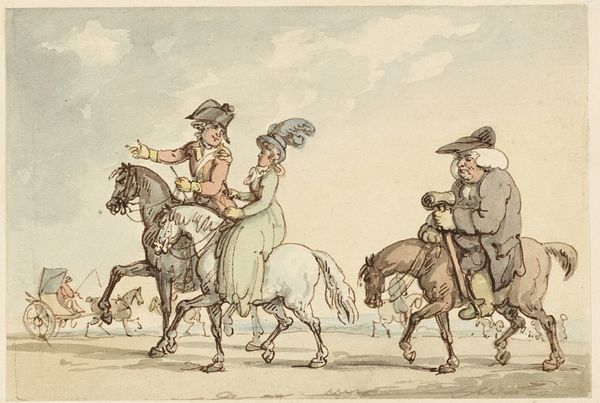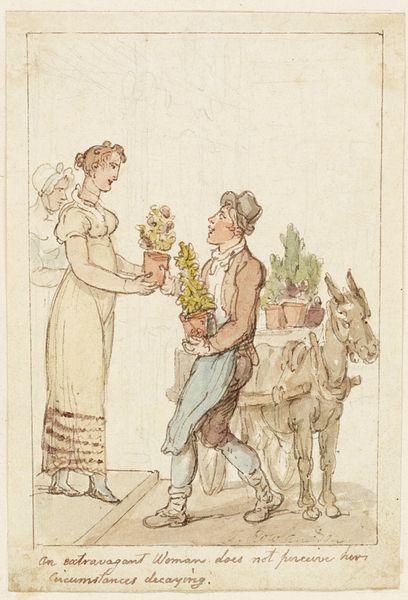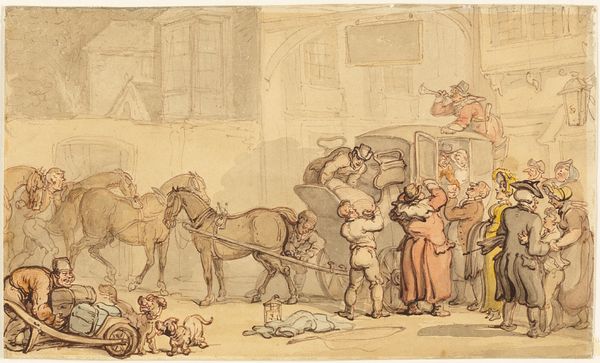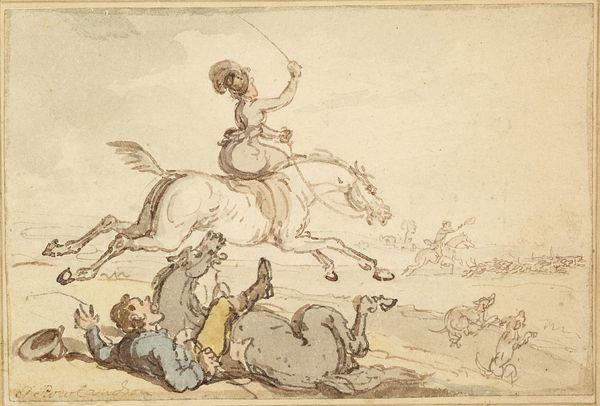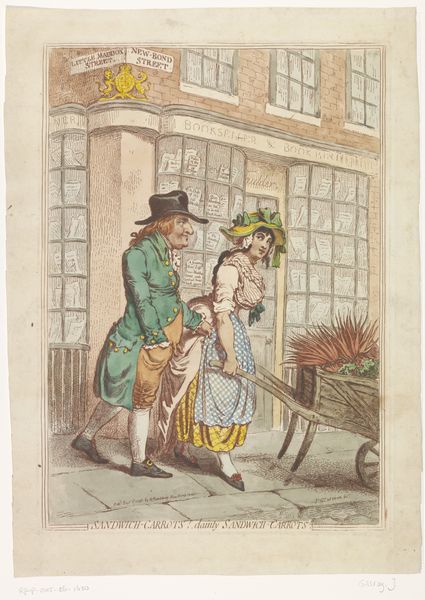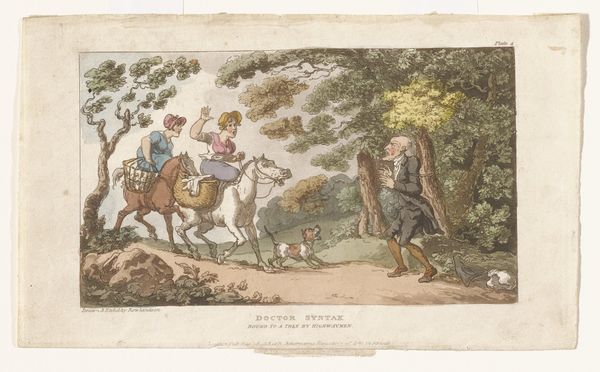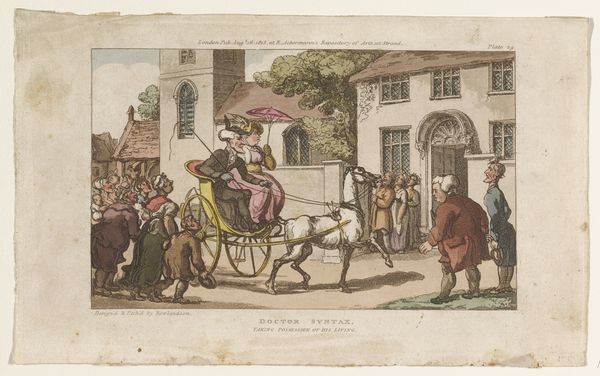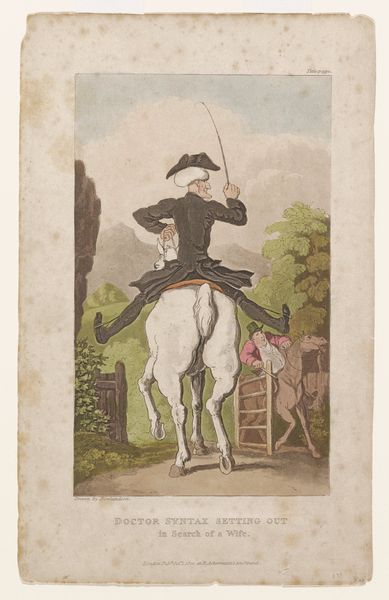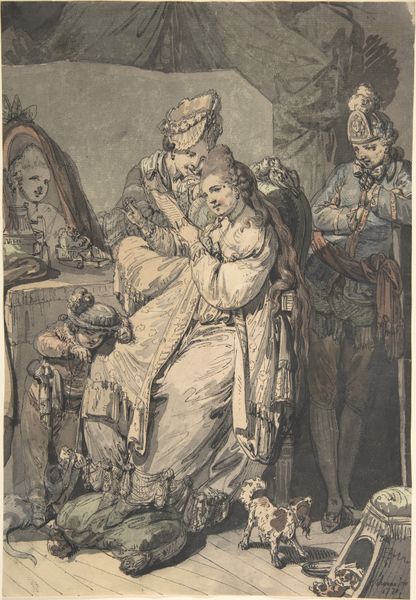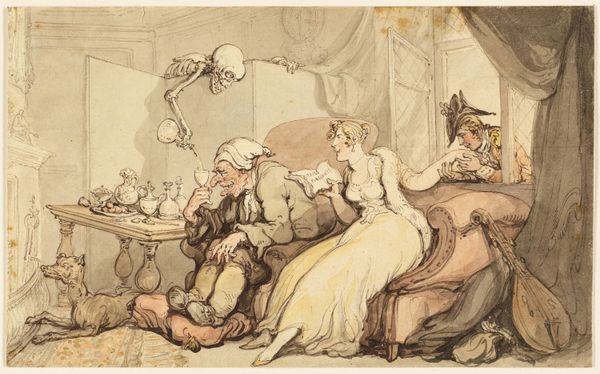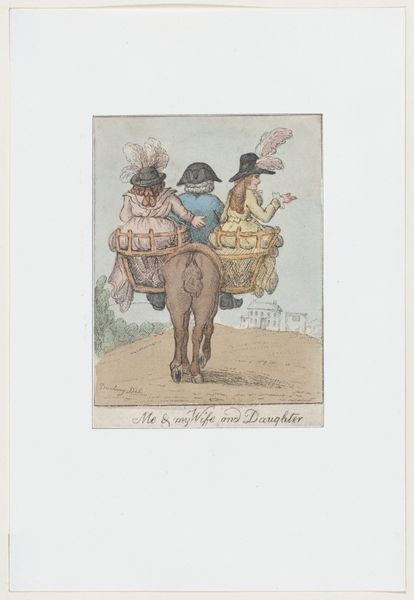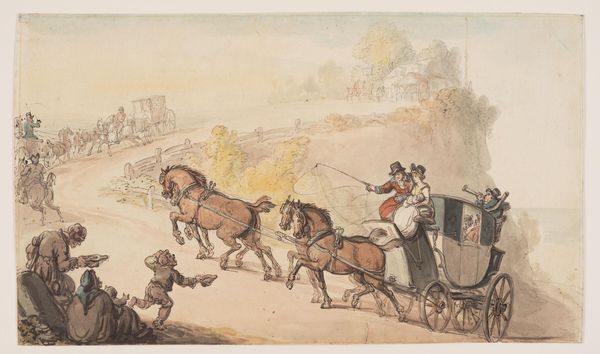
drawing, print, paper, ink, graphite
#
drawing
#
imaginative character sketch
# print
#
paper
#
personal sketchbook
#
ink
#
sketchwork
#
england
#
water
#
graphite
#
sketchbook drawing
#
character design for animation
#
watercolour illustration
#
storyboard and sketchbook work
#
cartoon carciture
#
sketchbook art
#
fantasy sketch
Dimensions: 186 × 153 mm
Copyright: Public Domain
Curator: Here we have a print called "Vicar of Wakefield," by Thomas Rowlandson. It's undated, but we believe it originates from around the late 18th or early 19th century. What's your initial take on it? Editor: Immediately, I'm struck by the cartoonish exaggeration. The figures seem almost grotesquely caricatured, a playful, yet biting social commentary seems implied. Curator: Precisely. Rowlandson was a master of caricature, using it to expose the follies of the day. Observe how he uses line and wash; it is not merely descriptive. See the economy of line creating form and volume with an almost sculptural sensibility. Editor: I am also noting the narrative elements. The plump, overdressed figures perched precariously on the horse contrast sharply with the two young women on the left. It raises questions about status, privilege, and gendered expectations of the time. Is it a commentary on the excesses of the upper class and the objectification of women? Curator: Possibly, yes. We must remember Rowlandson worked in a milieu steeped in satirical prints. He engages the viewer, demanding an interpretation of each meticulously rendered line, shadow, and shape. Look at the positioning of each character—they function semiotically. Editor: And beyond formal arrangement, think about how these power dynamics play out in everyday life. The wealthy, the clergymen – those deemed 'respectable'– often uphold the very systems that oppress others. Rowlandson offers, perhaps, a critique of complicity itself. Curator: Absolutely. He doesn't simply present an image; he initiates a dialogue, making this unassuming watercolor drawing a remarkable reflection of Georgian society, full of complexities and ironies. Editor: Seeing Rowlandson's piece today, it acts as a vibrant reminder of how art can spark critical dialogues about historical injustices and also provoke fresh conversations about the continued manifestations of inequality within contemporary society.
Comments
No comments
Be the first to comment and join the conversation on the ultimate creative platform.
